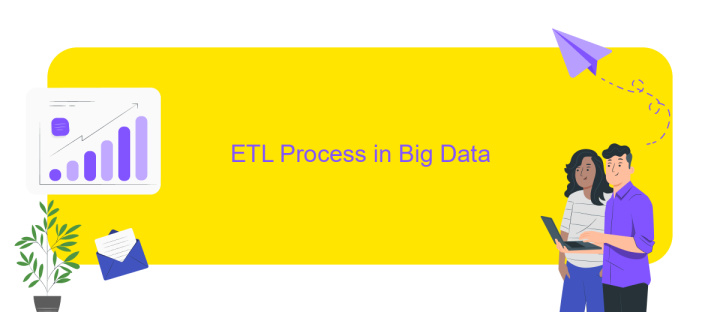ETL Full Form in Big Data
In the realm of Big Data, ETL stands for Extract, Transform, Load. This crucial process involves extracting data from various sources, transforming it into a suitable format, and loading it into a data warehouse or database. ETL is foundational for data integration, enabling organizations to consolidate disparate data streams into actionable insights, thereby driving informed decision-making and operational efficiency.
ETL Full Form in Big Data
ETL stands for Extract, Transform, Load, and it is a crucial process in Big Data management. The ETL process involves extracting data from various sources, transforming it into a suitable format, and loading it into a data warehouse or database for analysis. This process ensures that data is clean, consistent, and ready for further processing and analysis.
- Extract: Data is collected from multiple sources such as databases, APIs, and flat files.
- Transform: The extracted data is cleaned, normalized, and transformed into a format suitable for analysis.
- Load: The transformed data is loaded into a target database or data warehouse.
Using ETL tools and services like ApiX-Drive can significantly streamline the integration process. ApiX-Drive offers automated solutions for extracting data from various sources, transforming it as needed, and loading it into your desired destination. This automation reduces manual effort and ensures data accuracy, making it easier to manage and analyze Big Data effectively.
Understanding the Components of ETL

ETL, which stands for Extract, Transform, Load, is a process used in big data to integrate and manage data from various sources. The first component, Extract, involves retrieving raw data from diverse databases, APIs, or other data sources. This step is crucial as it ensures that all relevant data is collected for further processing. Tools like ApiX-Drive can simplify this process by automating data extraction from multiple sources, ensuring timely and accurate data retrieval.
The second component, Transform, focuses on converting the extracted data into a suitable format for analysis. This may involve cleaning, filtering, and aggregating data to remove inconsistencies and enhance its quality. The final component, Load, involves transferring the transformed data into a target data warehouse or database. This step is essential for enabling efficient data querying and analysis. Together, these components ensure that data is systematically processed and ready for insightful analysis, driving informed decision-making in organizations.
ETL Process in Big Data

The ETL process in Big Data is essential for transforming vast amounts of raw data into valuable insights. This process involves three main stages: Extract, Transform, and Load. Each stage plays a crucial role in ensuring data is accurately processed and ready for analysis.
- Extract: In this stage, data is collected from various sources such as databases, APIs, and flat files. Tools like ApiX-Drive can be used to automate and streamline the extraction process, ensuring data is gathered efficiently and accurately.
- Transform: Once extracted, the data needs to be cleaned and transformed into a suitable format. This may involve filtering, aggregating, and enriching the data to meet specific business requirements.
- Load: The final stage involves loading the transformed data into a data warehouse or a Big Data platform where it can be accessed for analysis and reporting.
By leveraging tools such as ApiX-Drive, organizations can simplify the ETL process, reducing the time and effort required to manage data integration. This enables businesses to focus on generating insights and making data-driven decisions.
Benefits and Challenges of ETL

ETL (Extract, Transform, Load) processes are crucial for managing and analyzing big data. They allow organizations to consolidate data from multiple sources, ensuring it is clean, consistent, and ready for analysis. This process enhances decision-making by providing accurate and timely information.
However, implementing ETL comes with its own set of challenges. Data quality issues, integration complexities, and the need for real-time processing can pose significant hurdles. Ensuring that data transformations are accurate and maintaining the performance of ETL pipelines are also critical concerns.
- Improved data quality and consistency
- Enhanced decision-making capabilities
- Streamlined data integration from multiple sources
- Scalability to handle large volumes of data
To address these challenges, services like ApiX-Drive can be invaluable. ApiX-Drive simplifies the integration process by allowing seamless connections between various data sources and destinations. This not only reduces the complexity of ETL setups but also ensures that data is accurately transferred and transformed, enabling organizations to focus on deriving insights rather than managing data pipelines.
Future of ETL in Data Management
The future of ETL (Extract, Transform, Load) in data management is poised for significant transformation with the advent of advanced technologies and methodologies. Traditional ETL processes are evolving to accommodate real-time data processing, enabling businesses to make faster and more informed decisions. The integration of artificial intelligence and machine learning into ETL workflows is enhancing data accuracy, reducing manual intervention, and optimizing the entire data pipeline.
Moreover, the rise of cloud-based ETL solutions is simplifying data integration across various platforms and services. Tools like ApiX-Drive are revolutionizing how businesses handle data by providing seamless integration capabilities, automating routine tasks, and ensuring data consistency across multiple systems. As organizations continue to generate vast amounts of data, the future of ETL will focus on scalability, flexibility, and efficiency, making it an indispensable component of modern data management strategies.
FAQ
What is the full form of ETL in the context of Big Data?
Why is ETL important in Big Data?
What are the main stages of the ETL process?
Can ETL processes be automated?
What challenges are associated with ETL in Big Data?
Time is the most valuable resource in today's business realities. By eliminating the routine from work processes, you will get more opportunities to implement the most daring plans and ideas. Choose – you can continue to waste time, money and nerves on inefficient solutions, or you can use ApiX-Drive, automating work processes and achieving results with minimal investment of money, effort and human resources.

